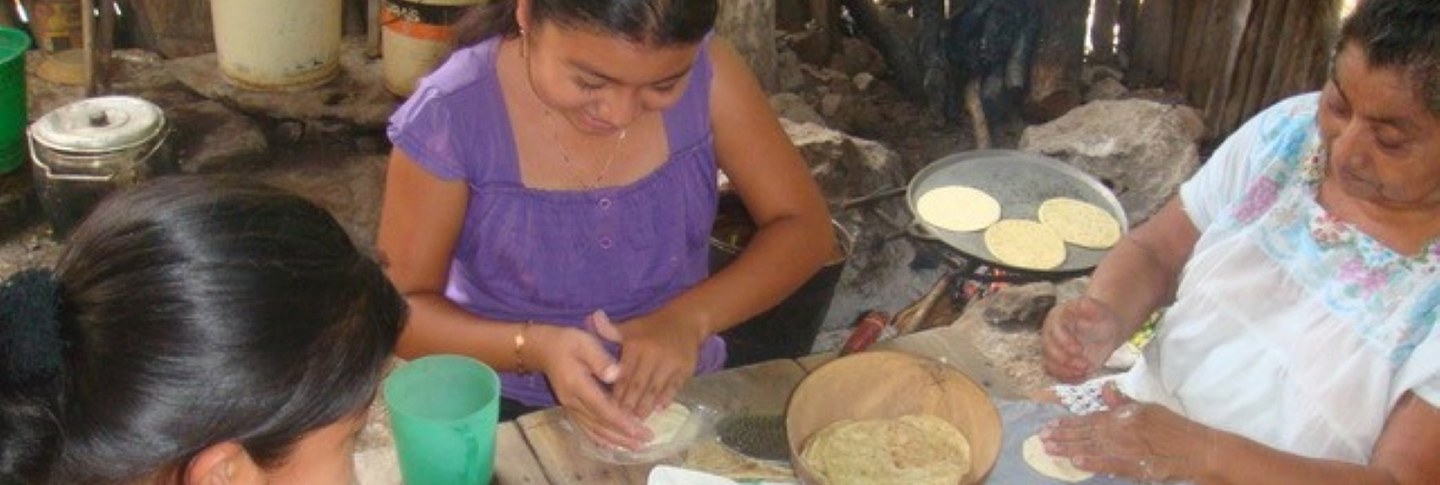Crystal Sheedy will be an assistant professor at the University of South Dakota starting in fall 2022 and was a 2021–2022 fellow in Pre-Columbian Studies. Her research report, “Maya Women’s Worlds: Speech and Practice in a Maya Community,” introduced the speech genre u t’aan nukuch máak in Xocén, Yucatán, Mexico, which demonstrates how modern Maya women have preserved and adapted Indigenous cultural knowledge.
Q&A with Crystal Sheedy
Where is Xocén, and what is the project you’re working on with the community there?
Xocén is a village about twelve kilometers southeast of the city of Valladolid, in the state of Yucatán in Mexico. I initially was brought to the community through my participation in the Yucatec Maya Institute of the University of North Carolina and Duke University. In summer 2010, then project director Sharon Mujica introduced me to a family to stay with while I conducted ethnographic research for my master’s thesis, and I’ve been working there ever since.
My project started off by trying to document women’s ceremonial and midwifery knowledge. When I asked if there were any rituals or ceremonies just for women, they kept saying there weren’t any ceremonies or stories specific to women—it seemed like dead ends all over the place, and I was getting frustrated. But then, one day, I was eating a tortilla at ceremonial event and dropped a piece of tortilla on the ground, and the women around me said that my grandmother is hungry, which is a proverb they will say in that situation. I realized that there was a whole speech genre that I hadn’t recognized. It’s known as u t’aan nukuch máak, glossed as “words of the elders” or “proverbs,” and they’re these fleeting instances of different symbols and concepts that date all the way back to the colonial and Pre-Columbian periods. Women use them throughout the day in various interactions, typically as they raise younger generations into Maya thought. I collected over 290 examples of this speech genre, and my work with my collaborators has involved trying to understand why these are culturally significant to them.
What has this study revealed about the speech genre?
The speech genre appears at various spaces and times that aren’t necessarily ritualistic in how they’re defined in scholarship; it’s just a normal happening as you would think in Western thought that they first hear as children, like as a scold. During rainstorms, for example, there are extra protections women have to take to make sure their fertility isn’t affected. They can’t sew, wash clothes, or sit next to the hearth to cook food during rainstorms, and items with reflective surfaces need to be covered. Otherwise, the rain deity Chak will strike them with a lightning bolt or affect their fertility in some way.
I took a decolonial and collaborative approach to this study in the sense that I brought my knowledge of ethnographic, ethnohistoric, and archaeological knowledge to these conversations, and my collaborators brought their knowledge of their cultural values and belief systems, and together we tried to figure out why these were so important. One of the challenges with the genre is that they don’t necessarily know why the proverbs were important because they were children being scolded when they were introduced to them, and their parents seldom told them the reason why until they were older. Sometimes they also had just forgotten.
We’ve learned that u t’aan nukuch maák is this innate knowledge in the community learned from childhood, and it’s culturally significant because it denotes times and spaces that are perhaps no longer thought of as religious or supernatural per se, but their bodies still remember and carry out these practices. It demonstrates that, despite years of forced assimilation, marginalization, and other traumatic processes that they and their ancestors have endured in settler spaces, women continue to do their daily work and pass on this knowledge. I use Gerald Vizenor’s concept of survivance; the practice is modified to suit their current lifestyles, but when you look more deeply you can see the continuity and resiliency of beliefs and practices.
Why is it important to document these practices?
It’s incredibly important because within academic scholarship and more widely in tourism literature, there are typically just two extremes in how Mayas are depicted. They’re either timeless, holding onto their ancient traditions and not modernizing, or—in academic scholarship—victims of settler processes that have caused so much cultural loss. Neither give modern Mayas and other Indigenous populations the agency to just live their lives, and the fact is, cultures change, as do languages. This study gives them the space to just exist within their own framework.
The community of fellows in Pre-Columbian Studies, led by [director of Pre-Columbian Studies] Frauke Sachse, has been so supportive, especially helping me prepare for my campus visits, and the library is amazing and you can get anything you need.
May Wang is postgraduate writing and reporting fellow.

